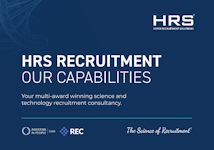
‘Candidate experience’ isn’t just some distant buzzword that your science organisation can safely ignore – because, let’s face it, the candidates for your vacancies certainly don’t, and nor do your competitors. According to a survey on the UK candidate experience cited by online recruitment resource Onrec, 94% of the UK recruitment and HR professionals quizzed considered a positive candidate experience a priority.
However, that doesn’t mean it’s exactly an easy or quick process to cultivate a great candidate experience at your company. It’s a task that will require constant effort at every touchpoint, so here are some of the things you can do to optimise the candidate journey to the benefit of both the jobseeker and your own firm.
Try out your own organisation's application process
Past research has indicated a huge disconnect between candidates and employers as far as their perceptions of the candidate experience is concerned, with many candidates finding themselves taking hours over an application process that the given company may think only requires 30 minutes’ of time investment.
So, this particular advice is simple: go through your own organisation’s application process to ascertain the reality of the situation. You may well immediately spot issues with the process that you never expected to see, and it’s fair to say that there’s no such thing as an ‘over-optimised’ job application process – there’s always room to improve.
Place the emphasis on relationships rather than CVs
Even in the marketing world that for so long seemed to treat customers in a somewhat impersonal manner, it is becoming widely accepted that people need to be treated like people, rather than numbers. This has led so many firms to invest heavily in creating a customised experience for those who wish to purchase from them – so why isn’t the same happening with employers for candidates?
As articles like this one from CNBC indicate, “ghosting” – the phenomenon of an employer suddenly ceasing to communicate with a candidate in whom they previously seemed interest – appears to be becoming an ever-greater problem.
With statistics continuing to suggest a frighteningly large percentage of candidates who never hear back from a prospective employer after their last interview or even simply the initial job application, it’s fair to say that there’s huge scope for your company to stand out when it really works hard on the candidate journey.
Consider what the ideal candidate journey may look like
This is the kind of thing for which a team meeting and a load of A3 paper could come in very useful. Planning out the process that you would like to unfold for people applying for a job with you – from the initial point of contact, right through to onboarding – could throw up many obvious optimisation opportunities.
If that sounds a bit intimidating, ask yourself some teasing questions first, such as “What does the ideal candidate look like?” and “What is the kind of communication from a prospective employer to which that ideal candidate is most likely to respond?”
You should also consider how you can make that candidate feel welcome at every stage of the application process, and if all of that sounds like too much effort, you might think about how communication of a more automated nature could be used at various stages.
Would you like to strengthen your own organisation’s chances of filling its open science jobs? A linkup with the science recruitment experts at Hyper Recruitment Solutions might turn out to be the perfect first step.
